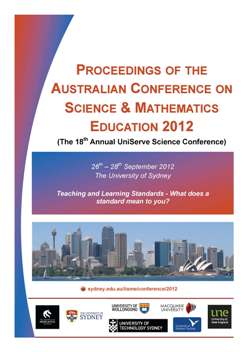Which representation is best? How students use representational information in problem solving
Abstract
We can present information to students, but the representation we use may change the way it is understood. Both diagrams and equations are seen as abstract physics representations, part of the physics disciplinary discourse (Airey & Linder, 2009), and can be notoriously difficult for students to understand (Woolnough, 2000). In this respect, Fredlund et al (2012) have suggested that different physics representations have different disciplinary affordances, that is, they perform different disciplinary work. In the area of refraction, Snell’s Law is often regarded as the essential form of information, but can Snell’s Law distract students from understanding simple questions? In this study, a survey with either a ray diagram or Snell’s Law as an equation was administered to over 300 first year university physics students. It was found that a ray diagram drawn as an example instead of Snell’s Law allows for a better reasoning tool to understand refraction of light for students both novice (219 students who had not studied physics previously) and experienced (98 students who had studied physics at high school). This finding has an impact on the way that optics are taught and understood at a high school and university level. The work suggests that the choice of representation may also be educationally critical in other areas of physics and science where a variety of representations including equations and diagrams are commonly used to share knowledge.Downloads
Published
2012-08-24
Issue
Section
Abstracts
